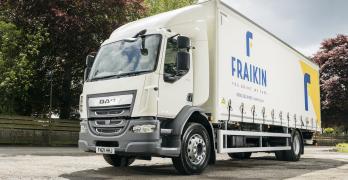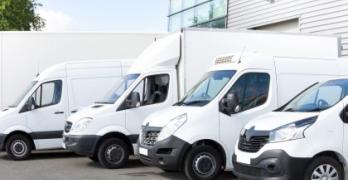How can retail remain agile down to the last mile ?
- 14/09/22
- 4 min
As the COVID-19 crisis has shown only recently, last-mile deliveries can quickly become a headache. As well as dealing with short-term pressures, retail companies need to demonstrate adaptability in the face of ever-changing economic and regulatory contexts. This approach relies on their ability to make their fleet more versatile and constantly anticipate their future delivery needs.

This is a real challenge, and one that many retailers have faced very recently. During the lockdown period, many companies found themselves delivering products in larger volumes, or products they were not used to delivering, and doing so right to the last mile. In France, for example, home deliveries increased by an average of 73.8% during the COVID-19 lockdown period. If they are to guarantee deliveries down to the final stage even in peak periods of activity, retail companies require agility that depends on a certain amount of foresight.
Making vehicles more versatile
Making your fleet more versatile can increase flexibility without the need for costly investments. One way that retailers can achieve this is by fitting their vehicles out differently. If they have no refrigerated trucks available for delivering fresh goods, they can fit their “dry” transport vehicles with insulated crates. And they can adapt to the increase in deliveries of small packages without changing the volume of their trucks by making retrofit alterations. For example, they can install modular shelving for loading more packages in a truck in response to a temporary increase in activity. Such alterations enable companies to optimise the use of their vehicles and, in the short term, to offer a broader raft of services that were not provided for by the original sizing of their fleet.
Refining planning
Another avenue to explore is optimising delivery shifts and routes. The key to achieving greater agility right to the last mile of the logistics chain lies in a two-dimensional approach to planning. Retailers can limit numbers of round trips by firstly concentrating their deliveries into the same slot, if they make sure that their package delivery arrangements are scheduled as early as possible. This measure usually goes hand in hand with a reorganisation of the delivery route. Optimising this ensures that no two vehicles visit the same street on the same day, thus reducing numbers of vehicles and drivers, and the time required to deliver. With the growth in ever faster and more frequent deliveries (sometimes within one hour), and with more urban constraints (the majority of cities already imposing dedicated hours), it is highly likely that this trend will intensify in the years ahead.
Anticipating vehicle replacement
The medium- and long-term challenge for retailers is to anticipate changes in their activity, and also in European standards, particularly on pollution-related issues. Since the early 1990s, the European Union has been constantly tightening the emissions standards set for cars and other vehicles, to combat increasing pollution. Each set of standards, up to the latest one in 2020 (Euro 6d), has imposed limits on the total quantity of certain exhaust gas emissions from cars. And a number of cities now go beyond the standards by prohibiting or aiming to restrict the movement of diesel vehicles. This has been the case since the beginning of the year in Copenhagen, Oslo, and, at certain times of day, in Barcelona. Paris plans to introduce a similar ban in 2024. So, to adapt to these regulations at a time when long-term rental contracts for certain vehicles such as lorries can run for up to 104 months, early renewal is an option to consider. What makes this approach all the more advantageous is that is offers the opportunity to rent more modern vehicles with new clean technologies, such as limiting fuel consumption or improving driver comfort and safety.
Also worth reading

The domino effect of geopolitics on automotive supply chains

Transport: The promise of hydrogen

